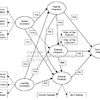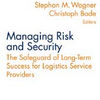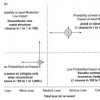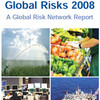 How does company culture shape a firm’s risk mitigation and response, and thus, how does company culture shape a firm’s supply chain agility? That is the research question asked by Michael J Braunscheidel and Nallan C Suresh in their 2009 article The organizational antecedents of a firm’s supply chain agility for risk mitigation and response. The article was suggested to me by one of my readers as his ‘favorite’, and after reading it I do understand why, because it links up with and extends many previous works on supply chain flexibility and supply chain agility.
How does company culture shape a firm’s risk mitigation and response, and thus, how does company culture shape a firm’s supply chain agility? That is the research question asked by Michael J Braunscheidel and Nallan C Suresh in their 2009 article The organizational antecedents of a firm’s supply chain agility for risk mitigation and response. The article was suggested to me by one of my readers as his ‘favorite’, and after reading it I do understand why, because it links up with and extends many previous works on supply chain flexibility and supply chain agility.
Culture versus organization
This research investigates two cultural antecedents (market orientation and learning orientation) and three organizational practices (Internal integration, external integration and external flexibility), and their impact on the supply chain agility of a firm. Culture is seen as either market oriented (with attention given to customers, competitors, coordination of efforts), or as learning oriented (with attention given to commitment to learning, shared vision and open-mindedness).
What is supply chain agility?
It is the capability of the firm, both internally and in conjunction with its key suppliers and customers, to adapt or respond in a speedy manner to marketplace changes as well as to potential and actual disruptions, contributing to the agility of the extended supply chain. The article makes a distinction between agility and flexibility, where flexibility is seen as an internally focussed competency issue, while agility is seen as an externally focussed capability issue.
A maze of intertwined relationships
 One of the most interesting parts of the paper is the figure illustrating the hypotheses as to what affects what else. No less than 12 hypotheses are presented in relation to organization and culture, and where possible referenced with the matching literature. These hypotheses are then later investigated in a large-scale survey in order to find support or no support. Depending on how the company is oriented in culture (market or learning) and organization (internally or externally integrated or flexible), one would expect different impacts on a firm’s supply chain agility.
One of the most interesting parts of the paper is the figure illustrating the hypotheses as to what affects what else. No less than 12 hypotheses are presented in relation to organization and culture, and where possible referenced with the matching literature. These hypotheses are then later investigated in a large-scale survey in order to find support or no support. Depending on how the company is oriented in culture (market or learning) and organization (internally or externally integrated or flexible), one would expect different impacts on a firm’s supply chain agility.
Supported by the case studies
- Market orientation > internal integration.
- Market orientation > external integration.
- Learning orientation > external integration.
- External integration > internal integration.
- Market orientation > external flexibility.
- Internal integration > supply chain agility.
- External integration > supply chain agility.
- External flexibility > supply chain agility.
Not supported by the case studies
- External integration – external flexibility.
- Internal integration – external flexibility.
- Learning orientation – internal integration.
- Learning orientation – external flexibility.
Risk mitigation and response
Risk mitigation an response are not a major part of this article, contrary to what the title implies. Nonetheless, by enhancing agility, firms are also enhancing risk mitigation and response. Risk mitigation and response are developed by identifying key drivers for cultivating agility. This in turn establishes a causal structure for which variables that in fact are affecting risk mitigation and response tactics.
Conclusion
This article adds much to literature on supply chain agility. It also shows the cultivation of agility can be seen as a disruption risk management tactic that enables the firm and its supply chain partners to respond rapidly to not only market place changes, but also to both potential and actual disruptions in the supply chain.
Agility and its antecedents are of value for both mitigation and response tactics, emphasizing fast, proactive measures when faced with potential disruptions, and also for rapid response measures following the occurrence of expected or unforeseen disruptions.
Reference
Braunscheidel, M., & Suresh, N. (2009). The organizational antecedents of a firm’s supply chain agility for risk mitigation and response Journal of Operations Management, 27 (2), 119-140 DOI: 10.1016/j.jom.2008.09.006
Author links
- brockport.edu: Michael J Braunscheidel
- buffalo.edu: Nallan C Suresh
Related
- husdal.com: The Severity of Supply Chain Disruptions
- husdal.com: Agile Business Continuity












